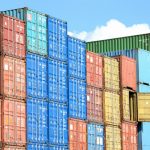Food spoilage is a significant yet often underestimated problem that carries serious consequences across economic, environmental, and public health spheres. Each year, roughly one-third of the world’s food supply is wasted — a staggering statistic that results in over $1 trillion in global economic losses. However, the effects of food spoilage go far beyond just financial concerns, impacting everything from supply chains to environmental stability and public well-being. Understanding these far-reaching impacts is crucial for identifying solutions that can curb this pervasive issue.
Economic Strain on Supply Chains and Consumers
The economic fallout from food spoilage disrupts supply chains at multiple levels. For farmers, spoilage can mean losing entire harvests before their crops even reach market shelves. This is particularly damaging in regions where transportation infrastructure is inadequate, causing delays that lead to substantial waste.
Distributors are also affected, as shipments of perishable items are frequently rejected due to spoilage in transit. Meanwhile, retailers face significant financial losses when products expire or perish before being sold. These mounting costs inevitably trickle down to consumers, resulting in higher grocery prices as businesses attempt to recover their losses. For budget-conscious households, this can place added strain on accessing affordable and nutritious food.
Environmental Consequences of Wasted Food
Food spoilage also carries a serious environmental toll. When discarded food decomposes in landfills, it produces methane — a potent greenhouse gas that is 25 times stronger than carbon dioxide in terms of its environmental impact. This accelerates climate change and worsens air quality.
Additionally, food production itself consumes immense resources, many of which are wasted when spoiled food is thrown away. Agriculture alone accounts for approximately 70% of the world’s freshwater usage. Wasted food represents a loss of not only the crops themselves but also the water, energy, and labor invested in their production. From deforestation to fertilizer runoff, the environmental costs of producing food that never reaches a plate are enormous.
Health Risks Associated with Food Spoilage
Beyond financial and environmental concerns, spoiled food presents serious risks to public health. Perishable items that are improperly stored or past their expiration date can become breeding grounds for harmful bacteria such as Salmonella, Listeria, and E. coli. These pathogens can lead to severe foodborne illnesses, posing a significant threat to consumers.
Outbreaks linked to contaminated produce, dairy, and meat products place strain on healthcare systems, resulting in medical costs and lost productivity. Preventing food spoilage not only protects public health but also reduces the economic burden tied to treating preventable illnesses.
The Role of Advanced Packaging in Reducing Spoilage
One of the most effective yet underutilized strategies for combating food spoilage is improved packaging technology. Innovative materials such as corrugated plastic packaging are gaining popularity for their ability to preserve food quality. This specialized packaging offers superior moisture resistance, ventilation, and durability, effectively shielding perishable products from contamination and environmental damage.
By maintaining optimal conditions during storage and transit, advanced packaging solutions significantly extend the shelf life of fresh produce, dairy, and meat products. This proactive approach helps minimize spoilage while reducing financial losses across the supply chain.
Broader Solutions for Tackling Food Spoilage
While improved packaging plays a key role, comprehensive strategies are essential to effectively reduce food waste on a larger scale. Investing in cold chain infrastructure — such as temperature-controlled storage facilities and transportation — can dramatically improve the longevity of perishable goods.
Consumer education is equally vital. Raising awareness about proper food storage practices, from refrigerator organization to understanding expiration labels, can empower individuals to minimize spoilage at home.
Technological innovations also show promise in reducing food waste. Real-time sensors that monitor produce conditions during transit can provide early warnings if temperature changes or spoilage risks arise. Additionally, businesses and communities can collaborate to redistribute surplus food to food banks and charities, ensuring that edible items benefit those in need rather than ending up in landfills.
The Urgent Need to Address Food Spoilage
The consequences of food spoilage touch nearly every aspect of modern life — from household budgets to environmental sustainability and public health. By investing in smarter packaging, improving cold storage infrastructure, and educating consumers, we can collectively reduce food waste and build a more efficient food system.
To learn more about the unseen costs of food spoilage and explore innovative solutions, see the accompanying resource.





